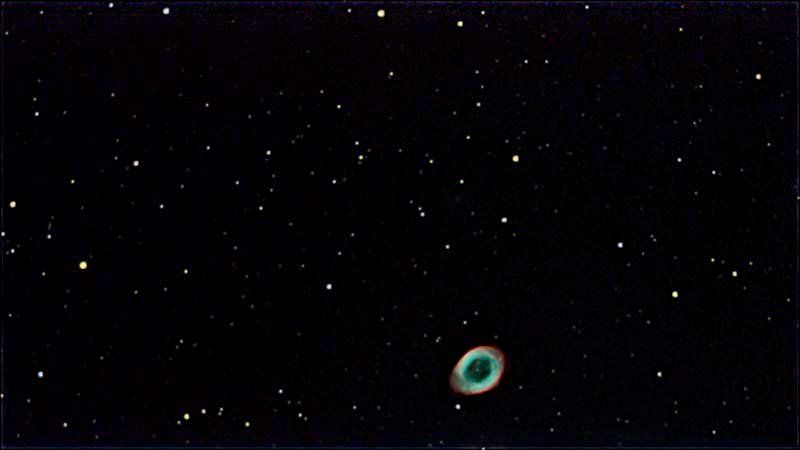M57
The Ring Nebula (also catalogued as Messier 57, M57 or NGC 6720) is a planetary nebula in the northern constellation of Lyra. Such objects are formed when a shell of ionized gas is expelled into the surrounding interstellar medium by a red giant star, which was passing through the last stage in its evolution before becoming a white dwarf. This nebula was discovered by the French astronomer Charles Messier while searching for comets in late January 1779. Messier's report of his independent discovery of Comet Bode reached fellow French astronomer Antoine Darquier de Pellepoix two weeks later, who then independently rediscovered the nebula while following the comet. Darquier later reported that it was "...as large as Jupiter and resembles a planet which is fading" (which may have contributed to the use of the "planetary nebula" terminology).[6] It would be entered into Messier's catalogue as the 57th object. Messier and German-born astronomer William Herschel speculated that the nebula was formed by multiple faint stars that were unresolvable with his telescope.
In 1800, German Count Friedrich von Hahn announced that he had discovered the faint central star at the heart of the nebula a few years earlier. He also noted that the interior of the ring had undergone changes, and said he could no longer find the central star.[9] In 1864, English amateur astronomer William Huggins examined the spectra of multiple nebulae, discovering that some of these objects, including M57, displayed the spectra of bright emission lines characteristic of fluorescing glowing gases. Huggins concluded that most planetary nebulae were not composed of unresolved stars, as had been previously suspected, but were nebulosities. The nebula was first photographed by the Hungarian astronomer Eugene von Gothard in 1886.







